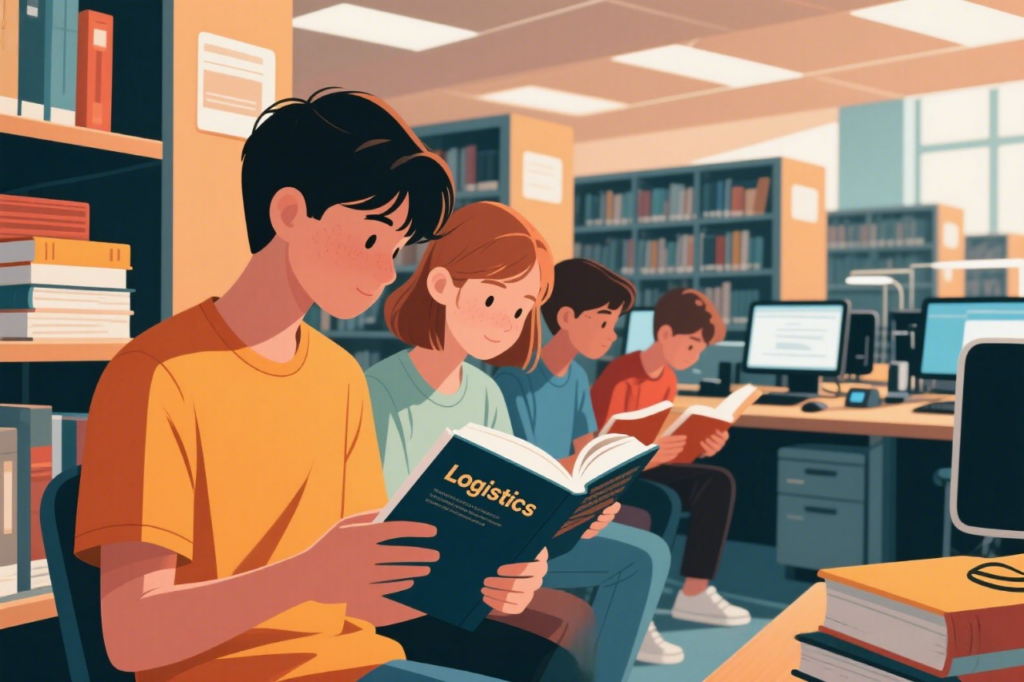
If you’re interested in the world of logistics and want to know more about what you’ll learn in an undergraduate S1 Digital Supply Chain program, this article will give you the full picture. The world of logistics is not just about transporting goods from one place to another but also involves various important aspects that ensure things run smoothly and efficiently. In the S1 Digital Supply Chain program, you will learn a variety of topics ranging from supply chain management and transportation to the latest technology applied in logistics.
- Supply Chain Management
Supply chain management is one of the most important aspects of an undergraduate degree in S1 Digital Supply Chain. The supply chain connects various elements in the production and distribution of goods, from raw material suppliers to the products that reach the end consumers. In this program, you will learn how to manage each stage of the supply chain to achieve the most optimal efficiency and cost.
Some of the topics that will be studied in supply chain management are
- Production Planning and Control
Learn how to plan production to match market demand, including how to manage stock and avoid losses. - Inventory Management
Manage inventory to avoid overstocking or understocking. This is crucial in maintaining smooth operations and reducing costs. - Procurement and Purchasing
Understand the process of procuring goods and raw materials from suppliers in a cost-efficient and quality manner. - Risk Management
Every supply chain has risks, whether in terms of procurement, distribution, or production. In this program, you will also learn how to identify and manage these risks.
For a more complete curriculum and courses on S1 Digital Supply Chain, you can visit this page!
- Transportation and Distribution
One of the core parts of logistics is transportation. Once the goods are produced and ready to be shipped, how do you get them to their destination efficiently and on time? There must be knowledge of the different modes of transportation and how to choose the most appropriate one for each situation.
There are several things that S1 Digital Supply Chain learns in transportation and distribution, including:
- Types of Transportation Modes
Learn about the different types of transportation, from land, sea, air, and rail. Each type of transportation has its own advantages and challenges, depending on the type of goods and shipping distance. - Fleet and Delivery Route Management
The main and key task in logistics is to plan and manage the delivery fleet optimally and effectively. Such as determining efficient delivery routes and managing transportation costs better. - International Distribution Logistics
In a globalized world, the distribution of goods between countries is essential. You will learn about the challenges and procedures associated with international logistics, such as customs, international regulations, and cross-border shipping. - Integrated Logistics
Integrate various logistics elements, from transportation and warehousing to freight forwarding, to ensure a smooth and efficient distribution process that can reduce prices.
- Technology in Logistics
Along with the development of technology, logistics engineering graduates and the logistics world are also increasingly dependent on various tools and systems that can help improve efficiency and accuracy and reduce the level of human error. Next, you will get to know and learn how technology is used to optimize the logistics process, from start to finish, such as planning and shipping goods.
Here are some of the technologies studied in the undergraduate logistics program:
- Logistics Information System
Logistics information systems are studied in the undergraduate S1 digital supply chain program and are used to manage logistics data and processes in real time. This system is very helpful for management, especially helping in the management and supervision of the logistics process. With this system it will be easier in terms of inventory, information provision, and delivery. - Automation and Robotics
Many logistics companies are now using automation technology in the warehouse to speed up the process of moving goods. Students will learn how robotics and automation can reduce costs and increase process speed. - Big Data and Analytics
Nowadays, data is very important. You will learn how to use big data in our S1 digital supply chain program to analyze market trends, predict demand, and optimize distribution channels. - Internet of Things (IoT)
This internet of things will improve the efficiency of the logistics process by interconnecting internal company devices and then collecting data from various devices or logistics processes, such as monitoring goods in transit by capturing various data, such as temperature, condition of goods, and real-time location of goods.
- Practicum and Hands-on Experience
In addition to theoretical courses, in the S1 Digital Supply Chain program, students are also given the opportunity to take part in practicums and internships. This provides invaluable hands-on experience, as done by Telkom University S1 digital supply chain students. This practicum will give you real experience in the world of logistics, both in terms of planning warehouse management and shipping goods.
By joining the S1 digital supply chain program, you will be prepared to work in various fields in the logistics industry, be it in distribution, manufacturing, or e-commerce companies. You will learn various important topics such as supply chain management, transportation, and logistics technology that are needed by companies to ensure their smooth operations.
This program will give you a thorough understanding of how the world of logistics works and how to manage the flow of goods and information efficiently. If you’re interested in this world and want to build a successful career, the Bachelor of Digital Supply Chain could be the perfect education option for you.
Tags : S1 Digital Supply Chain | S1 Digital Supply Chain program | S1 Digital Supply Chain Telkom | Telkom University
